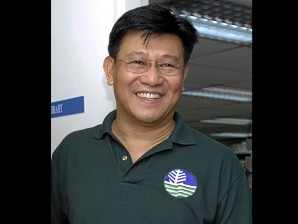
Environment Secretary Ramon Paje
MANILA, Philippines—Buying a house and lot? Check out the government’s geohazard maps first to see if the property is prone to landslides or floods or whether it sits on or near an earthquake fault.
Environment Secretary Ramon Paje on Friday urged prospective buyers of property, as well as real estate developers themselves, to refer to the geohazard maps produced by the Mines and Geosciences Bureau (MGB) to avoid places vulnerable to disasters.
“We strongly advise prospective buyers of land properties for housing or other infrastructure projects to refer to the geohazard maps to make sure that the lots they are intending to buy are not situated in landslide- and flood-prone areas,” Paje said in a statement.
The geohazard maps, he said, can be viewed on the websites of the Department of Environment and Natural Resources (denr.gov.ph), MGB (mgb.gov.ph), Philippine Information Agency (pia.gov.ph) and the Environmental Science for Social Change (essc.org.ph).
Based on the MGB’s geohazard mapping and assessment program, the top 10 flood-prone areas are Pampanga, Nueva Ecija, Tarlac, Pangasinan, Maguindanao, Bulacan, Metro Manila, North Cotabato, Oriental Mindoro, and Ilocos Norte.
The top 10 landslide-prone areas are Benguet, Mountain Province, Nueva Ecija, Kalinga, Apayao, Southern Leyte, Abra, Marinduque, Cebu, Catanduanes, and Ifugao.
The maps, with scale of 1:50,000 (meaning one centimeter represents half a kilometer), are also downloadable, Paje said.
“Or, they could go and see the maps with their local government units as we have given all local government units, down to barangay level, geohazard maps for reference in their development planning,” he added.
“Buying a house and lot is definitely a big investment for an ordinary family; that they have to pay at the most, for 30 years, if they acquire such through a housing loan,” he said. “Finding out that their area gets easily flooded and prone to landslide later on would be tragic, so it is better to be on safe side always.”
As for real estate developers, Paje urged them to conduct a thorough study of the area and make the necessary engineering interventions.
“We have already experienced the varied impacts of climate change – severe flooding, landslides, drought – which we could no longer ignore. These are the new normal, and to stay afloat with these new situations, we need to adapt to climate change by way of technologies, engineering interventions, even the architecture of our buildings and houses.”
The geohazard mapping and assessment program of the DENR-MGB is an important component of the government’s risk reduction and disaster management program, the department said.
The program involves the identification of areas in the country prone to various geologic hazards like rain-induced landslides, floods, ground subsidence or sinking, coastal degradation and other forms slope instabilities.
Paje said his department has already completed producing the geohazard maps with a scale of 1:50,000 for all the 1,634 cities and municipalities throughout the country, and has started the process of enlarging the maps to a scale of 1:10,000.
The DENR through the MGB is also conducting a coastal and marine geohazard survey and assessment, he said.